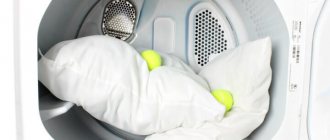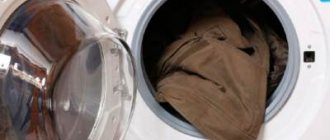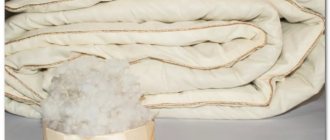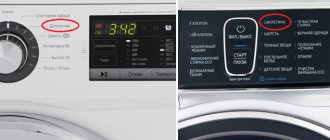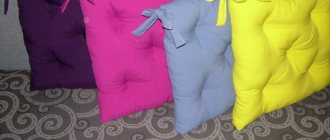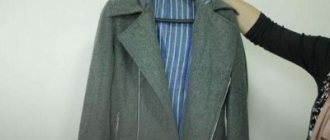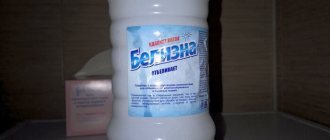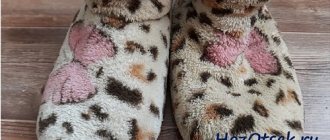Sintepon is an artificially created fiber with a fibrous, porous structure, which has special qualities inherent only to it. It is able to retain heat, volume and its shape for a long time, and it is also durable. Therefore, in many household products, be it pillows, warm clothes or blankets, it is the main material. Despite the complex production, products made from padding polyester are not only affordable, but also safe to use, even for children. Often such products have higher strength and reliability, which is an absolute advantage in their use.
Preparatory measures
If you are interested in the question of whether it is possible to wash a down pillow in an automatic washing machine, then the answer is clear - you can. But first you need to carefully prepare for this process:
- Sew or purchase special covers for washing down and feather products. If the pillow is small, you can wash it entirely using an additional pillowcase. However, many recommend washing the filler piece by piece, especially if the product does not fit in the drum. In this case, you should divide the filler into several parts and wash them separately.
- Open the napkin one seam at a time.
- Place the fluff (feather) in a dry plastic bowl.
- Place the filling into bags and sew them tightly. You can use old pillowcases as covers, but the filling must be secured carefully so that the shell does not open during washing and the fluff does not damage the drum.
Adviсe:
To machine wash pillows, purchase special PVC laundry balls with small spikes or use regular tennis balls.
They will have an additional mechanical effect on the filler during rotation of the drum and prevent clumping of the material. If the pillow is already old and has never been washed, then take it to the dry cleaner, as the old down can completely collapse when wet. Carefully pour the stuffing material into the covers to prevent it from spreading throughout the apartment. Work indoors without drafts
There should be no children, animals or household appliances nearby that could become clogged with fluff. Pads for filling can be sewn from thick cotton fabric without holes.
Preparatory work
At the very beginning, you should decide whether washing will be done by hand or in a machine, whether it is acceptable at all or whether it will have to be taken to the dry cleaner. All products have a label indicating which cleaning method, at what temperature and modes are indicated. If the machine is allowed, then it is better to give preference to this method.
If there is no label on the pillow, then you can check its suitability for washing in two ways:
- Bend the object in half. If it quickly returned to its original state, then the item has not lost its elasticity and can be sent to the machine.
- Place something heavy on the product: a couple of books, a bag of cereal, then remove it after 2-3 minutes. If the dent disappears quickly, this is a good sign. If it remains, it is better to dry clean it or buy a new pillow rather than wash this one. With worn-out filler, it will become even more damaged from cleaning.
Next, you need to buy a liquid laundry detergent, since regular laundry detergent is very difficult to rinse out of padding polyester, leaves streaks on the fabric, and the strong smell of the detergent will interfere with sleep. For cleaning in the machine, it is better to purchase a cover (bag) for washing or take a pillowcase. With any option, the entire pillow is washed; there is no need to remove the filling and clean it separately, as for feather products.
Machine washable
The easiest and most convenient way to clean bedding at home is machine washing. The drum of the machine must be spacious and designed for 5 or more kilograms of laundry
It is important that the device has delicate washing functions, and during the washing process it is possible to turn off the spin
Before washing, place the pillow in a protective cover or in an old unnecessary pillowcase: it will protect the filling from curling. Once the machine is ready for washing, the pillows are moistened with cold water directly in their protective covers - this prevents surfactants from the detergent from being absorbed deep into the fibers.
Dry cleaning
If the product label indicates that it is not intended for wet cleaning by hand or in a machine, it is better to take the item to dry cleaning. Professional workshops use special cleaners that easily remove dirt without damaging the filler and pillowcase.
At home, just ventilate such a thing in the fresh air in a horizontal position, then carefully knock the dust out of it.
Machine washable
If this is your first wash, take a close look at your blanket.
First, look at the label for washing tips. Secondly, check whether it is possible to remove the padding polyester and wash only the cover. And, thirdly, check for stains and heavily soiled areas, which are best washed by hand first or at least rubbed with soap (as a rule, there is a lot of dirt on the edging in particular).
back to the beginning
What to wash with?
Now about choosing a detergent. Here you need to understand 2 things:
- When washing all products with padding polyester filler, it is not recommended to use bleach:
- Liquid laundry detergent is preferable to washing powder.
back to the beginning
In what mode should I wash?
Modern washing machines have an impressive number of modes.
Among them, you will certainly find a suitable mode for washing a blanket, both in duration and temperature.
The “Synthetic” mode is optimal; most modern washing machines have it. The spicy wash mode will not be necessary in this case, but it won’t hurt if other modes seem unsuitable for you. The main thing is not to overdo it with the temperature.
To prevent the filler from matting during the washing process, place 2 tennis balls in the drum of the machine.
Although, for a padding polyester blanket it is not necessary to do this. It is also possible, but not necessary, to secure the filling with several large stitches if the blanket is not lightweight.
Synthetic blankets withstand constant washing unsurpassedly. They do not deform and retain their original appearance for a long time. The physical characteristics of the filler prevent it from falling off or forming lumps after washing. Even after a couple of washing cycles, such a blanket remains soft, elastic and uniform.
Sintepon absorbs water evenly, so the blanket dries quickly.
You can spin a padding polyester blanket in a washing machine, but the speed should not be more than 800.
To maintain the original condition of the blanket for a long time, you need to shake and stretch the product well after washing. Drying should take place in a natural position; from time to time it is necessary to twist the blanket.
Compact washing machines, as a rule, do not have a fairly huge drum or are limited in the weight of the loaded laundry.
In this case, the padding polyester blanket cannot be washed without problems. As annoying as it may sound, there is no recipe for “how to put a huge blanket in a small washing machine.”
And there are only a few options left:
- negotiate with relatives or friends who have a larger washing machine;
- wash the blanket by hand;
- use dry cleaning services;
- go to the laundromat.
Hand washing is not as effective and is extremely labor-intensive, so in such cases it is recommended to use dry cleaning services.
Professional cleaning is guaranteed to leave your product in perfect order. Laundry is also a good option, see for yourself:
back to the beginning
Choice of product
It is best to clean products with padding polyester filler using such means as capsules, gels or liquid preparations. When rinsing, they are completely washed out of the loose padding polyester, which significantly reduces the risk of developing allergic reactions.
Unlike liquid products, dry powder cannot eliminate even a few thorough rinses. Residues of this drug often cause a strong chemical odor, white streaks on the surface and allergic symptoms in humans.
Important! The ideal option would be to wash pillows using products specifically designed for this purpose.
Have you ever washed synthetic padding pillows?
Of course not yet
Preparing the pillow before washing
Before you start washing, you should first pay attention to the product labels. This is where you can see basic information about the principles, as well as recommendations for cleaning the product.
How to wash a padding polyester pillow in an automatic washing machine to achieve the best result. Pillow manufacturers, as well as doctors, recommend cleaning synthetic padding products once every 3-4 months. This will prevent premature wear of the product, will allow it to maintain its presentation for longer and will protect the owner from pathogenic organisms and dust mites, which over time become infested in most bedding.
Next, you need to check the pillow for holes or tears in the material. This will help you decide whether it can be washed in a machine immediately or whether the product needs to be repaired first. If there are defects, you first need to eliminate the damage, and only then start washing.
Oddly enough, not every pillow can withstand cleaning in a washing machine. The fact is that over time, synthetic winterizer, like any other material, loses its basic qualities, such as maintaining a constant shape and volume. If this happens, then washing in an automatic machine is absolutely contraindicated and then it is more advisable to choose alternative cleaning methods or take the product to dry cleaning. In order to check this property of the pillow, you need to place it on a flat horizontal surface, and place some weight on top, for example, a book or a jar filled with water
After a few minutes, you need to remove the weight and pay attention to how long it takes for the pillow to return to its original shape. If this happens within 5-7 minutes, then such a product can be washed in an automatic machine, and it will not lose its original appearance
Basic washing rules
First you need to find out whether the pillow is suitable for use or has already outlived its useful life.
The synthetic winterizer should be elastic, with strong fibers, which retains its shape after water procedures. To do this, the product is compressed or folded in half. If the product has straightened, it is still suitable for use. It is better to replace a crumpled pillow with a new one.
Recommendations
- First, study the product label to find out how to care for it.
- Determined by the type of washing.
- When washing in an automatic machine, 2 items are loaded at once.
- Each pillow is covered or placed in an old pillowcase.
- After completing the machine cycle, add an additional rinse to ensure that the detergent is completely removed.
Once the product is completely rinsed, wring it out by hand, wrapping it in a towel or clean absorbent cloth. You cannot twist the pillow.
By hand or in a machine
When filled with organic type, the pillow can be washed in the washing machine. But organic matter does not have a long service life, so everyone must decide for themselves whether it is advisable to clean out old raw materials if they can purchase a new product.
You can contact a professional service, where the pen undergoes thorough processing.
Here is the sequence of how to wash pillows in a washing machine correctly.
- The original pillowcase is opened to remove the insides.
- The fluff is placed in different bags (about 3-5 parts).
- The water temperature is a maximum of thirty degrees (organic matter is washed in cold water, since hot liquid has a negative effect on it).
- Mode selection. Each device has its own designation, so you should choose a delicate one, for example, manual or swan-down mode.
- It may seem that it is better to use the maximum spin speed, but this is not so. Here you need slow drying, so four hundred turns will do. Sometimes it is worth not using this function at all.
The choice of washing and spinning modes will depend on the filler of the product.
An important criterion is the choice of detergent. The usual powder is not suitable for this purpose. On store shelves you can find a special composition, the purpose of which is to clean down and feathers. If this cannot be found, then take a gel, liquid powder or a composition in the form of a detergent with ammonia no more than three percent (approximate calculation: for five liters you should take a cap of soap and four teaspoons of ammonia).
If you wash it incorrectly, you can get the opposite result instead of a neat “fluffy” pillow.
If necessary, you can wash the product by hand. On the contrary, fluff in such a cleansing will look better, due to the inability to bunch up. A few basic rules when choosing manual processing.
- Take water at room temperature (not hotter than thirty degrees).
- Choosing a container - the best solution would be the bathroom. Filling is poured into it after the pillowcase has been opened.
- Soaking is allowed from three to four hours. You shouldn't do this any longer.
- After a predetermined period of time, the contents of the bathtub begin to be removed. It is better to do this using a colander.
- Having given away the feathers, they are packaged in separate bags.
- The resulting number of bags is hung on the street, where they begin to dry.
Not only feather pillows, but also anti-stress options or bamboo filling are treated using this method.
The feathers are removed from the pillow and washed separately.
Holofiber is washed by hand. It is better to take a gel-like detergent, add it to a lukewarm liquid, and soak the pillow in this composition (no longer than one hundred and twenty minutes). Push up without force, with light movements. Afterwards, rinse again in clean, lukewarm water. Only now it’s time to hang it out to dry.
It is better to do this outside, the main thing is not to expose it to direct sunlight.
Sintepon versions of the product are cleaned according to the same scheme as holofiber.
Bamboo bedding is not processed in hot liquid (about thirty degrees). Ordinary laundry soap is suitable as a detergent. All highly foaming products are not suitable for high-quality processing. Finally, the pillow is rinsed in liquid at room temperature.
To dry, it is better to place the item on a horizontal surface.
General washing rules
The first and most important rule is to study the label on the product. Usually the manufacturer indicates whether and how the pillow can be machine washed.
The label on the left is machine washable, the label on the right is prohibited. Use the following as a hint:
The following rules apply to preparing a product for washing:
- Inspection of the confidant. The fabric should not have holes or other damage. You need to be especially careful when washing feather pillows. In the washing machine, the pillowcase may come apart, and small feathers will get stuck where they are not needed.
- Pre-washing. Stubborn stains and heavy dirt are removed in advance. The machine will not clean them, since gentle programs are chosen for washing pillows.
- Using liquid detergents and extra rinsing. Powder can make the filler rough. It does not rinse well and does not work at low temperatures.
An extra rinse is necessary to remove all chemicals from the detergent. It is important. The pillow is in contact with the face, and the person inhales everything that is in it.
Choosing a detergent
Pillows are washed exclusively with liquid products - machine washable gels.
You can use any gel that works at a temperature of 30-40 degrees. For delicate fillers, detergents for wool and silk are used. Popular brands:
- Vanish;
- Frosch;
- Ariel;
- Persil;
- Meine Liebe.
It is advisable to choose a gel without bleach and stain remover in the composition. As a last resort, they must be oxygen. Chlorine content in detergent is unacceptable!
Advice. To improve the quality of washing, it is recommended to use a water softener (Calgon or other).
Features of washing a synthetic blanket
Having familiarized yourself with the types of processing of padding polyester blankets, clarify certain aspects, failure to comply with which could damage the item.
Even the frequency of washing affects care. In order for the blanket to have very effective health protection, it needs to be washed about three times a month. Then you will protect yourself and your loved ones from the dust collected in the blanket.
Each product has a label with tips that contain washing instructions. Manufacturers traditionally indicate the temperature and mode, the use of which will preserve the original appearance of the blanket. For padding polyester, a temperature of no more than 40 degrees in a gentle mode is applicable.
Detergent or washing powder should be chosen based on the spicy mode, without containing bleaches and reagents.
To avoid line breaks, place the blanket in a fabric bag (pillowcase) or roll it up into a cushion.
After washing, the product must be given its original shape by stretching it. It is recommended to dry the synthetic blanket naturally, by hanging it in the fresh air. From time to time you can twist the product to dry the closed side. Thanks to its characteristics, synthetic winterizer dries quickly and takes on its original appearance, retaining its color and shape.
Handwash
If the size of the drum does not allow you to place a blanket there, you will have to wash the item by hand. This procedure is more gentle, but labor-intensive: when wet, the filler becomes heavier and increases in volume.
Peculiarities
Recommendations for hand washing a padding blanket:
- A large basin or bathtub is filled with warm (+40 ᵒC), but in no case hot water.
- Detergent is dissolved in the liquid.
- Dip the blanket into soapy water (it should be completely wet) and leave it for 1 hour.
- Dirty, greasy places are washed with laundry soap; they can be cleaned with a soft sponge.
- After an hour, drain the water and rinse in several waters.
Dry the blanket on a horizontal surface in a warm place or outside on a sunny day. To prevent the filler from settling and losing volume, during the drying process the item is turned over several times from one side to the other.
How not to spoil something
There are several prohibitions when cleaning a padding blanket:
- you cannot increase the water temperature to + 50 ᵒC or more: at high temperatures the material is deformed and the cover fades;
- You cannot rub a thing with padding polyester with a brush - the filler will get knocked down, crumpled or fluffed up;
- Do not dry bedding in a vertical position: it will become deformed.
Washing stubborn stains
Such stains are first washed with laundry soap or detergent with a stain remover (it should not contain chlorine). If the entire blanket is greasy, wash it with a gel designed for difficult to remove stains. The perimeter of the product is treated especially carefully - this area is the most contaminated.
Additionally, combined capsules are used for washing, stain remover and conditioner. The capsule is pierced and the contents are dissolved in a bath of water. If necessary, several of them are used.
Proper drying
How to dry pillows:
- In a horizontal position on a flat, hard surface so that the item does not become deformed.
- Sintepon cannot be twisted or squeezed.
- When placed vertically or suspended, padding polyester fillers do not dry: they clump together.
- You should not leave the item near heating devices: high temperatures negatively affect the structure of synthetic fibers.
- After washing, the pillow is wrung out between two large terry towels and laid out on a dry, clean cloth, preferably in a well-ventilated area or outdoors.
Whipping
As soon as one side of the product dries a little, it is turned over. Such manipulations are repeated several times. During the process, the still wet product is gently beaten so that it does not settle and the filler does not become thin .
How to wash synthetic padding pillows by hand?
Large pillows will have to be washed by hand
Pillows for which the washing machine drum is too small must be washed by hand or taken to dry cleaning. Both the first and second methods force you to give up the habit of trusting your “assistant” to do all the work. There's nothing you can do, you need to roll up your sleeves and get down to business, armed with a high-quality liquid detergent.
Wet cleaning of synthetic padding pillows will require you to do the following:
- Pour warm water into a large container (for example, a bathtub) and add the required amount of gel for washing synthetic products. It is not necessary to foam the product.
- Place the pillow in the water, turn it from side to side and leave it alone for 20 minutes.
- After the allotted time, wring out the product without twisting.
- Rinse the detergent out of the pillow by immersing it in a container of cool water. This must be done carefully, but carefully; there is no need for unnecessary mechanical stress on synthetic padding.
- Wring out the product with your hands again. Wrap the bedding in an absorbent fabric or terry towel. This will get rid of any moisture that remains there and speed up the drying process.
- You need to dry the padding polyester pillow in the same way as in the previous case, that is, by laying it out on a horizontal surface. The item must be completely dry before you put the pillowcase back on it. Do not hang the pillow under any circumstances, otherwise the padding polyester will bunch up into one big lump at the bottom. You can get rid of it, but it will take a lot of time, energy and nerve cells.
Don't add extra work to yourself
Taking into account all the recommendations described above, you will cope with the task without much difficulty. In the end you will receive a clean item in immaculate condition.
Now you know how to wash padding polyester pillows. But do not forget that you need to clean all bedding at least once every six months. Hygiene throughout your home and living space will help you get rid of harmful microorganisms and maintain health for many years.
What should you pay attention to when washing synthetic padding pillows?
Dust mites under magnification
In a synthetic padding pillow, like in other bedding, dust accumulates, and along with it, dust mites that are harmful to health. In order not to provoke allergic reactions, it is recommended to clean pillows with synthetic padding at least 3 times a year. Even if the product looks clean and tidy, you should not wash it less often, otherwise health problems are guaranteed.
Pillows made of synthetic material can be cleaned in various ways. Is it possible to wash synthetic padding pillows in a washing machine if its upper part is made of delicate material? In this case, hand and machine washing is recommended, but it is important not to forget a number of precautions. Remember what to avoid when washing:
- hot water;
- wash and spin the product at high speeds;
- rub contaminated areas intensively;
- soak for a long time in a cleaning solution;
- use dry powder;
- use chlorine-containing bleaches.
Even if the pillow is very dirty, instead of soaking it, you just need to pour it with cool water and only then start washing it.
Features of washing anti-stress pillows
These pillows contain polystyrene balls, which must be handled with care when washing. The contents themselves tolerate automatic processing at minimum temperatures.
But if the cover is damaged, the ball filler will slip out of it and can damage the car. It will not be superfluous to pack the product in another additional bag. This type of pillow should not be washed at high temperatures or in the spin mode. If you intend to wash it in parts, it will be much easier to clean the filler with your hands. To do this, you need to put it in a special case, then dip it in a soapy solution and then rinse.
How to choose?
To understand which bedding is better, you will have to look at such a control parameter as tailoring design.
A padded blanket can be made in 3 ways:
- Quilted.
It is made on special machines. The padding polyester filler in such products is perfectly fixed thanks to the quilting; - Karostepnoe. It has a good thermal insulation rate and is often done manually;
- Cassette. A more expensive and practical product, which consists of several separate sections or cassettes, each of which contains padding polyester filler.
The next control parameter that you will have to take into account when choosing the best padding polyester product is size. The dimensions of bedding must always correspond to the size of the sleeping place. Otherwise, the bed will be uncomfortable.
The following sizes of blankets are available on the market:
- One and a half - 140x205;
- Double – 172x205;
- Children's - 110x140 or 120x120.
Also available on the Russian market are bedding made according to European standards:
- One and a half – 155x215;
- Double bedroom – 200x220;
- King size – 220x240.
All sizes are indicated in centimeters.
As a cover, manufacturers often use environmentally friendly and quite practical ones, thanks to which the finished product receives hygroscopicity and good air conductivity.
To make it more convenient to cover yourself with a blanket, the following are often used for the cover:
- Cotton;
- Silk;
- Knitwear;
- Jacquard weave fabrics.
These breathe well and keep the padding inside.
How to dry synthetic padding pillows
After washing, you need to dry the pillow properly to avoid deformation and loss of basic qualities. Drying is carried out on a flat horizontal surface, in a ventilated area. It is better to place the pillow on a floor clothes dryer, which will allow air flow evenly from all sides. It is not recommended to expose it to direct sunlight or place the pillow near heating devices, as this can lead to deformation of the product.
Taking care of bedding is not that difficult. Washing a padding polyester pillow is not difficult, and anyone can handle this task. The main thing is to follow the manufacturer’s recommendations and simple rules so that it lasts as long as possible.
Don't rush to make your bed immediately after waking up. Although they have been taught this way since childhood, many simply do not know what kind of life goes on on bed linen. Dust mites live on it, which can lead to an allergic reaction, inflammation of the respiratory tract, and asthma. Feather pillows (or other fillings) also need to be cleaned. A lot of microorganisms accumulate in it, and the rest of the epidermis collects.
Good pillows promote healthy sleep and good rest, so it is important to choose a comfortable product and keep it clean. Washing pillows is not as difficult a job as many people think
For a positive result (so that the filler does not go astray), you need to follow several rules. Then the bed will always be fresh, and nothing will threaten your health.
Washing pillows is not as difficult a job as many people think. For a positive result (so that the filler does not go astray), you need to follow several rules. Then the bed will always be fresh, and nothing will threaten your health.
To prevent your pillow from becoming a breeding ground for mold, dirt and dust mites, it must be washed periodically.
How can you get rid of dust mites?
There is an opinion that synanthropic organisms (including dust mites), which provoke allergies in humans, live only in down and feather pillows. However, this is not at all true. Pests can multiply even in artificial filler, accumulating in small air pockets remaining between the polyester fibers.
You can get rid of or reduce the number of ticks that have settled in padding polyester by using one of the following methods:
- Freezing bedding. For this purpose, they are taken out to a balcony or loggia and left for several hours in low temperature conditions.
- Treatment with ultraviolet light or high temperatures. To do this, just take the pillows outside, place them in direct sunlight and leave for 10-12 hours.
- The use of products with acaricidal additives intended for treating bedding. For example, "Akarosan" or "Allergoff". The preparations are available in the form of an aerosol or powder for adding to the water when washing.
Important! If for any reason none of the methods brings a positive result, the bedding is replaced with new ones.
Detergents
The retail chain offers many gels for washing pillows. But self-prepared gel compositions also help to wash products efficiently.
Detergents are harmless and inexpensive, and they are made from products available in every apartment kitchen. In addition, such gels can be used for washing both in an automatic machine and by hand.
Detergents
Equipment you will need:
- metal container (except aluminum);
- plastic spoon;
- for whipping - mixer/whisk;
- container with a lid/bottle with a large neck.
Components:
- laundry/baby soap – 200 g;
- baking soda/ash – 200 g;
- water – 2.5 l;
- essential oil (if desired) – 20 drops.
Step-by-step preparation:
Grind the soap bar on a grater with small cavities - this will help the shavings dissolve in water faster. Pour the chipping substance into a metal container and pour in 1.5 liters of clean water, heated to 30-35°C. Boil the mixture over low heat with continuous stirring until smooth. Carefully, while stirring the mixture, pour another 1 liter of water into it and add soda. At the end, pour in the selected ether (preference for mint, lavender or citrus fruits - lemon, grapefruit, orange). Stir the composition. Remove the container from the stove and leave to cool for an hour. Test the texture of the lukewarm mass
If it is too thick, add warm water, if lumps have formed in it, beat with a special tool. Pour the prepared washing gel into a container/bottle to store in the refrigerator. Use the product after it has hardened and shake before use.
Gel in a volume of 100-200 g is placed in a drum based on 5-6 kg of sleeping items. The recipe works thanks to baking soda, which can overcome strong stains.
A softer consistency for washing by hand will be obtained if part of the water is replaced with low-fat milk and infused green tea. If there is an allergy sufferer in the family, ethers should not be used.
Handwash
Washing a padding polyester blanket manually has certain features, for example:
- In order for the blanket to be perfectly saturated with water, it should be soaked for some time.
- The mechanical action must be soft: the blanket can be pushed with your hands or trampled with your feet, but you cannot use a stick, a mop or other similar devices.
- You should carefully rinse the blanket to remove the powder; you will need to change the water at least 5 times.
Each time the water must drain completely. - When washing by hand, the padding polyester blanket does not need to be wrung out. It is better to roll it up (while wet) and wait for the water to drain naturally. Additionally, you can blot with a towel.
VIDEO TO HELP:
How to wash
The most convenient way to wash the pillow is in the washing machine. The main thing is to set the washing mode and temperature correctly. Hollow fiber is washable at temperatures up to 70 degrees, but for padding polyester, temperatures above 40 degrees can be critical. If you are not sure what was used for the stuffing, then simply set the temperature to 40 degrees, for the same reason, turn off the spin cycle, since it is not recommended to wash synthetic padding pillows with a spin cycle - this filler may get confused and it will be difficult to straighten it out.
- Pour detergent into the washing machine. It is advisable to wash with liquid detergents, since the powder is difficult to wash out from synthetic fillers. Do not use bleach. They will damage the structure.
- Place some tennis balls in the drum. They will not allow the padding polyester to go astray. If you don’t have them, then it’s okay - if the filler gets knocked down, you can break it even after washing.
- Washing mode “synthetic” or “gentle”. If you are going to wash a holofiber pillow, you can leave the spin cycle on.
- Start the washing machine.
- After washing is complete, remove the pillow and, if necessary, wring it out with your hands. Don't twist it. To dry faster, wrap it with an absorbent cloth for a while to remove excess moisture.
- It is better to dry horizontally in a well-ventilated place, for example, laying it on top of clotheslines. This way, the filler won’t bunch up in one direction, but if it does, it’s not critical—it’s easy to straighten it out. Therefore, if you wish, you can hang it by the corners, this way the water will drain faster.
- It is imperative to whisk periodically: this way the padding polyester or holofiber will dry evenly. They dry quickly, so there is no need to speed up drying.
If you decide to wash a holofiber pillow by hand, then keep in mind that it will require effort to do everything efficiently:
- The water temperature for hand washing can be higher (50-70 degrees), since it will cool down during the process. There is enough water to soak the pillow completely.
- The detergent is diluted until completely dissolved.
- Soak the pillow, press it down, but do not wrinkle it, but gently beat it with your fists. Turn it over and hit it again. And so on several times.
- Rinse. To do this well, you will have to draw clean water several times, “beating” the product. It is unlikely to be possible to do this under pressure, since the fabric will simply inflate and will not allow you to rinse the filler.
- Hold the pillow suspended, let the water drain, you can squeeze it lightly. Absorb any remaining moisture with a terry towel.
- Dry as in machine wash.
If padding polyester or holofiber has become tangled after washing, then you can fluff it up in several ways. Try beating the product with your hands or a beater. Some people recommend going over the damp pillow with a vacuum cleaner, moving the clumps to the right places. If all else fails, then all that remains is to tear it apart, take out the filler, fluff it up with your hands (you can additionally comb it with a wide-toothed wooden comb) and return it to its place.
Precautionary measures
Cleaning pillows with synthetic filling at home should be carried out in strict accordance with the manufacturer's recommendations, as well as following several rules.
The main thing to remember is that the following actions are unacceptable:
- using water with a temperature of 40-50 degrees;
- washing in an automatic machine with a speed of more than 500 units;
- use of conventional washing powders and chlorine-containing bleaches;
- drying by twisting or using a machine spin, as well as near open fire and heating devices;
- washing without protective cover;
- placing one small pillow in a large drum;
- cleaning heavily soiled areas with stiff bristled brushes;
- soaking the pillow for more than 30 minutes;
- hanging the pillow during the drying process, leading to the displacement of the filling to one edge;
- dry wash without pre-wetting.
Compliance with all the rules will allow you to efficiently clean a synthetic padding pillow at home.
VIDEO: How to effectively wash a pillow.
Do-it-yourself cloud pillow for a children's room Cloud pillows look very cute and fit especially into little ones' rooms. Parents often decorate cribs with such pillows. Usually the material used is soft pastel fabric...
Orthopedic pillows for sleeping with osteochondrosis of the neck Diseases of the cervical spine give many people unpleasant sensations and troubles about this. Headaches, stiffness in movements, general poor health force the poor fellows to turn to...
How to wash a holofiber pillow in a washing machine Holofiber is a material that looks similar to cotton wool, but differs in that it contains synthetic threads. They are woven together in a non-woven way to create the necessary…
How to sew a zipper into a pillowcase Gone are the same type of massive pillows with feather fillings, which our grandmothers carefully shook and carefully placed on the beds. Today, smaller pillows are in fashion, and…
DIY decorative donut pillow A donut pillow is an original and beautiful gift for those with a sweet tooth, a creative addition to the interior. What could be better than creating it with your own hands? You can involve children in the creative process, organize...
Clean pillows are essential for good, healthy sleep. However, cleaning pillows is one of those tasks that we often forget and neglect, and this procedure is very simple.
But what should those who are poorly versed in this matter do? From this article you will learn how to wash a synthetic padding pillow in a washing machine and in other ways so that your bedding is always in perfect condition.
Characteristics and properties
Sintepon is a synthetic insulation made from polyester fibers, which is often used for sewing outerwear and bedding. Its undeniable advantages over natural types of materials:
- ease;
- practicality;
- wear resistance;
- affordable price.
The quality of a padding polyester product largely depends on what type of fabric is used: made by needle-punched, thermal or adhesive methods. The first two provide the material with good wear resistance even with frequent washing. When produced using glue, padding polyester may lose its properties and appearance after the first contact with water.
How to wash synthetic padding pillows in a washing machine?
Synthetic pillows do not like spinning when machine washed.
Washing clothes in an automatically controlled machine takes place without the intervention of the owner. The main thing to take care of is to choose the right mode and use a safe detergent. Not only washing, but also spinning at low speeds will not damage the padding polyester product. Experienced housewives who have been washing similar things for a long time speak about this.
Experts do not entirely agree with this formulation of the question. They believe that spinning harms the padding polyester in any case. Artificial padding under mechanical influence clumps into clumps and spoils the appearance of the product. Even if the spin was done at low speed, problems cannot be avoided, and soon the bedding will have to be replaced with a new one.
Is it worth washing synthetic padding pillows in a machine? We've sorted it out for you. All that remains is to familiarize yourself with the procedure. Each housewife, when placing a padding polyester product into the car, must:
- Place the pillow in a larger pillowcase or a special laundry bag.
- Place the product in the drum and pour plenty of water at room temperature over it.
- Pour liquid detergent into the cuvette.
- Set one of the modes corresponding to this product: “Delicate wash”, “Hand wash”, “Synthetics”.
- After finishing the machine, turn on the “Re-rinse” mode so that no traces of detergent remain in the product.
- Take out the pillow and wring it out by hand. The most convenient way to do this is in the bathroom, where there is plenty of space.
- Wrap the product in a large terry towel, which will help get rid of excess moisture and place it on a horizontal surface to dry.
Be sure to check the water temperature before washing; it should not be higher than 30 degrees. The rotation speed is also of great importance; you should not set it to more than 500 rpm.
To prevent the padding polyester from bunching up, add laundry balls to the drum.
Even if you followed all the rules, but the pillow became lumpy after washing, do not try to correct the situation right away. By fiddling with a wet product, you will only waste your time. Wait until the padding polyester is completely dry, and then get down to business.
When drying the bedding in a horizontal position, periodically turn it over and lightly beat it.
How to fluff padding polyester in a pillow after washing?
Not in every case it is possible to maintain the original appearance of the pillow after wet cleaning. Even very delicately washed padding polyester gets confused and caked. To return the filler to its original state, you need to wait until the pillow is completely dry, and then gently beat it with your hands.
You can also treat the damp surface of the bedding with a vacuum cleaner with a clean attachment. This method is effective if the lumps of padding polyester are not very dense.
As a last resort, the stuffing can be adjusted by hand, ripping the pillow apart, and then sewing it back up. This option is appropriate when a large number of lumps form.
Care
To extend the service life of a sleeping model with any filling, you must adhere to the care rules and manufacturer’s recommendations:
- The product must be ventilated regularly (at least once a week) in the fresh air.
- In the morning, the pillow must be fluffed and turned to the other side.
- The cover on a feather sleeping item needs to be changed annually, and the natural filling must be cleaned at the same period.
Regular wet cleaning and ventilation of the bedroom will help keep the product in good condition, especially for accessories with natural filler.
Work on mistakes
If the padding polyester inside the pillow has become loose as a result of improper washing, you can try to correct the situation.
The following recommendations will help:
- You can “walk” over the surface of a pillow that is not completely dry with a vacuum cleaner to redistribute the stuffing;
- shake the pillow, beat its contents;
- Try to straighten the padding polyester through the cover with your hands.
If the above tips do not help, you will have to act radically. To correct the result of improper cleaning, you will need to prop up the cover and straighten the contents of the pillow with your hands.
If an old pillow that has already become unusable has been washed, it will not be possible to restore its shape. The product should be replaced.
How to machine wash pillows filled with down and feathers
“Traditional” pillows with down and feathers are the most labor-intensive to wash. This is the only type of pillow that cannot be washed entirely - “disassembly” is required. Otherwise, the filler simply will not be able to dry properly, and the pillows will soon begin to emit an unpleasant smell of rotten feathers.
Prepare at least 2-3 cases for washing the filling - thick pillowcases without scuffs or bags made of teak or similar fabric. They can be sewn up or tied in a tight knot before washing. You can make the covers double-layered by placing them in additional pillowcases - if feathers “slip” into the washing machine drum during washing, they can clog the drain. The fewer feathers there are in each case, the better the washing and drying will be.
In order to remove the filling, the napkin is ripped open along the seam. This must be done extremely carefully, without sudden movements - otherwise the light filler will quickly scatter throughout the house, and collecting feathers and down is very difficult. It is best to first open the seam by 10-15 centimeters, place the corner of the pillow inside the cover and squeeze the filling into it. And only at the last stage can you open the entire length of the seam and collect the remnants of the feather from the breastplate with your hand.
Place the filler in the washing machine and wash according to general rules. In this case, it is best to choose a detergent designed for wool products. An additional rinse is also required.
During washing, the feather will certainly clump into clumps. After washing, be sure to knead the wet filler with your hands. To speed up drying, lay the covers on a terry towel or a sheet and duvet cover folded several times, wrap this “sandwich” in a tight roll and leave for 5-10 minutes. The fabric will absorb excess water.
Dry in a warm place, periodically fluffing and turning the covers over. It usually takes at least two days for feather litter to dry completely. After this, you can transfer the filling into a bed sheet, washed separately, and sew it tightly.
How often should you wash pillows?
On average, products are washed once every 3-6 months. Much depends on the type of filler:
- down and feathers, wool – once every 6 months;
- bamboo filler - every 2-3 months;
- synthetic fillers – once every 6-8 months.
It is best to do laundry in the warm season so that the product can dry quickly naturally. In winter, the event can be skipped.
Advice. To keep your pillow clean longer, change your pillowcases every 3-7 days.

